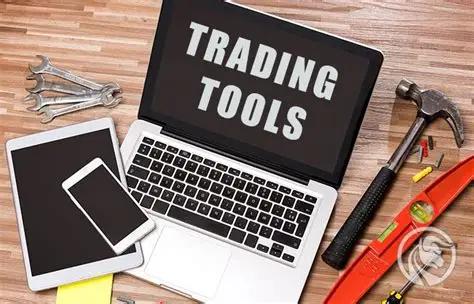Traders use tools and indicators like moving averages, RSI, Bollinger Bands, and MACD to analyze market trends, momentum, and volatility, aiding in decision-making for entry or exit points. Understanding these indicators is crucial as misapplication can lead to costly mistakes; for instance, using a moving average without accounting for its lag might miss opportunities. Successful trading often involves combining multiple indicators to confirm signals and minimize false positives, requiring comprehension of how they interact. Mastery of these tools not only enhances strategy precision but also improves risk management and adaptability to market conditions.
TradingView Tools
TradingView is a popular platform among traders and investors for charting and technical analysis. Here are some of the most commonly used tools on TradingView:
1. Trend Lines/Trend Channels
- Usage: Trend lines help in identifying trends, whether bullish or bearish. They connect two or more price points and extend into the future to act as a line of support or resistance.
- Example: In an uptrend, draw a trend line connecting the low points (higher lows) of the price movement. This can help identify potential buy zones when the price retraces.
2. Fibonacci Retracement
- Usage: This tool uses horizontal lines to indicate areas of support or resistance at the key Fibonacci levels before the trend continues in its original direction.
- Example: After a significant price move upward, use the Fibonacci retracement tool to measure the retracement levels like 38.2%, 50%, and 61.8% to predict where the price might find support.
3. Horizontal Lines/Rays
- Usage: Horizontal lines are useful for marking key support and resistance levels.
- Example: Place horizontal lines at historical highs and lows to identify critical levels where the price may stall or reverse.
4. Drawing Tools (e.g., rectangles, ellipses) - Zones
- Usage: These are used to highlight areas of interest like consolidation zones, breakout patterns, or harmonic patterns.
- Example: Use rectangles to mark trading ranges or consolidation phases, helping visualize where breakouts might occur.
5. Text and Anchored Notes
- Usage: Adding annotations and notes directly on the charts to remind yourself of specific setups or strategies.
- Example: Use text notes to mark key earnings announcements or economic data release dates that could impact price movements.
6. Volume Profile
- Usage: This tool shows the amount of volume traded at various price levels, indicating areas of high activity which might act as support/resistance.
- Example: A high volume node on the profile could signify a strong support area if the price is above it.

Trading Indicators
Apart from tools, TradingView offers numerous indicators that are essential for in-depth technical analysis:
1. Moving Averages (MA)
- Usage: Commonly used to smooth out price data and identify the direction of trends over specified periods.
- Example: A 50-day MA crossing above the 200-day MA might be used as a bullish signal (Golden Cross).
2. Relative Strength Index (RSI)
- Usage: Measures the speed and change of price movements, typically used to identify overbought or oversold conditions.
- Example: RSI values above 70 suggest overbought conditions, while values below 30 indicate oversold conditions.
3. Bollinger Bands
- Usage: Consists of a middle band (usually a simple moving average) and two outer bands representing standard deviations. Useful for determining volatility.
- Example: Price touching the upper band may suggest overbought conditions, possibly predicting a retracement.
4. MACD (Moving Average Convergence Divergence)
- Usage: Shows the relationship between two moving averages of a security’s price to identify momentum changes.
- Example: A MACD line crossing above the signal line might indicate a potential buy signal.
5. Stochastic Oscillator
- Usage: Used to compare a particular closing price of a security to a range of its prices over a certain period.
- Example: Values above 80 indicate overbought conditions, while below 20 suggest oversold conditions.
Importance of Tools and Indicators
Having these tools and indicators at your fingertips is crucial for several reasons:
- Precision: Tools like trend lines and Fibonacci retracements allow you to precisely identify entry and exit points.
- Confirmation: Indicators provide additional confirmation of the price action seen on the charts, adding confidence to trades.
- Risk Management: Identifying key support and resistance levels helps in setting stop-loss and take-profit orders.
- Strategy Development: Combining different tools and indicators helps develop comprehensive trading strategies tailored to individual market behavior.
- Visualization: Visual tools and annotations help clarify complex market movements, facilitating better communication and collaboration within teams if needed.
By effectively using these tools and indicators, traders can enhance their charting, improve decision-making, and potentially increase profitability in trading endeavors.
Join the Sniper Team and take your trading to the next level! Stock Sniper Trading
What are your favorite tools and indicators?

